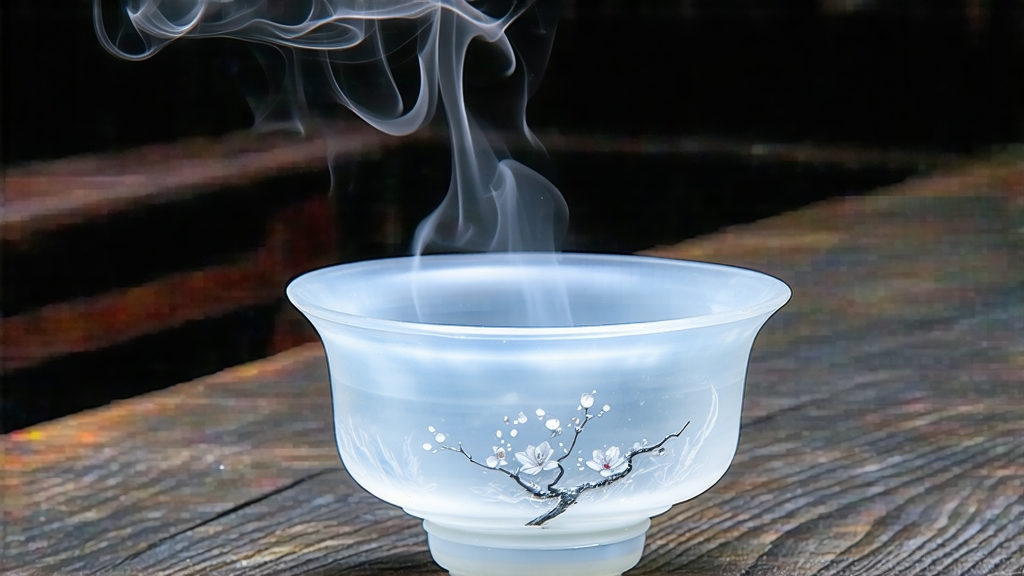
Among the six great families of Chinese tea, white tea is the least theatrical yet the most elusive. It is not rolled, not roasted, not twisted into dramatic shapes; instead, it is simply allowed to be. Of its minimalist triad—Silver Needle, White Peony, and Shou Mei—Silver Needle (Bai Hao Yin Zhen) is the aristocrat: plucked only in early spring, only the unopened bud, and only when the air is still carrying winter’s chill. To understand China’s oldest living tea tradition, begin with this single silvery down-covered tip.
1. Historical whispers
The first written record appears in the Song dynasty’s “Da Guan Cha Lun” (1107 CE), where Emperor Huizong praises a “white downy tea” presented by the prefect of Fujian. Yet villagers around Taimu Mountain insist monks were drying wild tea buds on bamboo trays during the Tang, three centuries earlier. Commerce formalised the style in the 1790s when Fuding’s growers discovered that the local Da Bai Hao cultivar—literally “Big White Down”—kept its pale colour even after gentle oxidation. By the late Qing, Silver Needle was floated down the Ao River to Fuzhou port, then across the South China Sea to Singapore apothecaries who valued its “cooling” nature in the tropics. Thus, a tea born of mountain mist became an export medicine before it was ever a domestic luxury.
2. Terroir and cultivar
Authentic Silver Needle comes from two counties in Fujian: Fuding and Zhenghe, each arguing its supremacy. Fuding’s coastal air is slightly salt-laden, encouraging thicker trichomes on the bud; Zhenghe sits higher, giving slower growth and a more mineral aftertaste. Both rely on the Da Bai Hao bush, whose buds can reach 3.5 cm, plump with amino acids and fuzzy like a newborn deer. A single kilo needs roughly 30,000 buds, all picked before Qingming festival when the morning dew is still cold enough to slow enzymatic browning.
3. The craft of “doing nothing”
The process is disarmingly simple: pick, wither, dry. Yet each step is a negotiation with humidity, temperature, and time. After picking, buds are laid on reed trays stacked in sun-warmed barns. For 36–48 hours they lose about 70 % moisture while enzymes nibble at the leaf’s interior, creating floral precursors without ever crossing into the territory of green tea’s grassy bite. When the bud feels like cured leather—flexible but no longer juicy—it is transferred to charcoal embers kept at 40 °C, a heat so gentle it is measured by the back of the master’s hand. The goal is 8 % residual moisture, low enough to store for decades yet high enough to allow micro-oxidation that will deepen the tea over time.
4. Grades and micro-seasons
Connoisseurs recognise three micro-seasons within the ten-day picking window:
- “Cold Dew” buds—harvested when night temperatures dip below 10 °C—carry the highest L-theanine and steep into a broth reminiscent of fresh soy milk.
- “Warm Breeze” buds—picked on suddenly balmy afternoons—develop more geraniol, yielding a lychee note.
- “Fog Retreat” buds—plucked right after dawn lifts the valley mist—balance both, but are rare because pickers must work in half-light.
Each season is further sorted by length, intact tip, and down density, producing grades marketed simply as “Supreme,” “King,” and “Court,” though these terms have no legal definition.
5. The silent transformation
Unlike pu-erh, Silver Needle does not rely on microbial fermentation. Instead, slow oxidation and polymerisation of flavanols create a honeyed maturity. A cake stored in porous paper at 25 °C and 60 % humidity will darken from platinum to antique gold over ten years, its aroma shifting from cucumber skin to dried apricot, then to white truffle. The most sought-after vintages are 2008 and 2012—cool, dry years that left the buds tight and long-lived.
6. Brewing: the art of restraint
Western guides often recommend 80 °C water for 3 min, but this flattens the tea’s arc. The Chinese gongfu approach treats Silver Needle like a shy violin: tune carefully, then listen.
Equipment: 120